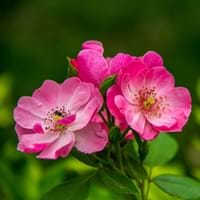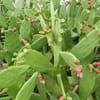Life Span
Perennial
Perennial
Type
Cactus or Succulent
Flowering Plants
Origin
Mexico
Europe, India, Northwestern Africa, United States, Western Asia
Types
Not Available
Not Available
Habitat
Desert
disturbed sites, Roadsides, stream banks, Woods
USDA Hardiness Zone
8-12
Not Available
AHS Heat Zone
12-5
Not Available
Sunset Zone
H1, H2, 8, 9, 12, 13, 14, 15, 16, 17, 18, 19, 20, 21, 22, 23, 24
Not Available
Habit
Upright/Erect
Upright/Erect
Flower Color
Yellow, Red, Orange
Lavender, Light Pink, Pink, Purple, White
Flower Color Modifier
Not Available
Bicolor
Fruit Color
Reddish Plum
Non Fruiting Plant
Leaf Color in Spring
Green
Green, Gray Green, Dark Green
Leaf Color in Summer
Green
Green
Leaf Color in Fall
Green
Green, Gray Green, Dark Green
Leaf Color in Winter
Green
Green, Dark Green
Leaf Shape
Globe shaped
Pinnate
Plant Season
Spring, Summer, Fall, Winter
Spring, Summer
Sunlight
Full Sun, Partial Sun
Partial shade, Partial Sun
Growth Rate
Medium
Medium
Type of Soil
Loamy, Sandy, Well drained
Clay, Loam
The pH of Soil
Acidic, Neutral, Alkaline
Alkaline
Soil Drainage
Well drained
Well drained
Bloom Time
Spring, Late Spring, Early Summer
Spring, Summer
Tolerances
Drought, Salt
Wet Site
Where to Plant?
Ground, Pot
Container, Ground, Pot
How to Plant?
Grafting, Seedlings, Transplanting
Seedlings, Stem Planting
Plant Maintenance
Medium
Medium
Watering Requirements
Does not require lot of watering, Water once every two or three weeks, Water when soil is dry
Keep the ground moist but not water-logged
In Summer
Lots of watering
Lots of watering
In Spring
Moderate
Moderate
In Winter
Average Water
Average Water
Soil pH
Acidic, Neutral, Alkaline
Alkaline
Soil Type
Clay, Loam, Sand
Clay, Loam
Soil Drainage Capacity
Well drained
Well drained
Sun Exposure
Full Sun, Partial Sun
Partial shade, Partial Sun
Pruning
Prune if you want to improve plant shape, Prune ocassionally, Remove dead leaves
cut main flower spike, Remove dead branches, Remove dead or diseased plant parts
Fertilizers
All-Purpose Liquid Fertilizer
Apply 10-10-10 amount, as it is a flowering plant, use high phosphorous content fertilizer
Pests and Diseases
Aphids, Caterpillars, Cochineal insect, Mealybugs, Nematodes, Red spider mite, Rodent, Root rot, Scale, Slugs, Snails, Thripes, Viruses, Worms
Grasshoppers
Plant Tolerance
Drought
Drought, Wet Site
Flower Petal Number
Single
Single
Foliage Texture
Bold
Medium
Foliage Sheen
Matte
Matte
Attracts
Aphids, Birds, Rodents
Birds, Small mammals
Allergy
Not Available
Constipation, Diarrhea, Headache, Heartburn, Nausea, Pain and fatigue, Stomach pain, Vomiting
Aesthetic Uses
Cottage Garden, Showy Purposes
Bonsai, Bouquets, Cottage Garden, Showy Purposes
Beauty Benefits
Nourishes scalp, Reduce Bruises, Remove blemishes
Good for skin, Skin Problems
Environmental Uses
Air purification
Air purification, Food for birds
Medicinal Uses
Antioxidants, Diabetes, Diarrhea, Hangover
Astringent, Diuretic, Laxative, Vitamin C
Part of Plant Used
Flowers, Leaves
Flowers, Rose Hip
Other Uses
Biomass for fuel, Employed in herbal medicine, Fine spines and trichomes are used as fiber for weaving, Oil is used for aromatherapy, Showy Purposes, Used As Food, Used as Ornamental plant, Used in construction, Used in Furniture
Making Perfumes, Used as Ornamental plant, Used for its medicinal properties
Used As Indoor Plant
No
Yes
Used As Outdoor Plant
Yes
Yes
Garden Design
Container, Feature Plant, Fruit, Fruit Tree, Hedges, Houseplant, Mixed Border, Rock Garden, Wall
Feature Plant, Mixed Border
Botanical Name
OPUNTIA ficus-indica
Rosa Arkansana
Common Name
Indian fig opuntia, Barbary fig, cactus pear, spineless cactus
Prairie Rose, Wild Prairie Rose
In Hindi
Opuntia ficus-indica
Rosa arkansana
In German
Opuntia ficus-indica
Rosa arkansana
In French
Opuntia ficus-indica
Rosa arkansana
In Spanish
Opuntia ficus-indica
Rosa arkansana
In Greek
Φραγκοσυκιά
Rosa arkansana
In Portuguese
Opuntia ficus-indica
Rosa arkansana
In Polish
Opuntia ficus-indica
Rosa arkansana
In Latin
Opuntia ficus-indica
Rosa arkansana
Phylum
Magnoliophyta
Magnoliophyta
Class
Magnoliopsida
Magnoliopsida
Order
Caryophyllales
Rosales
Family
Cactaceae
Rosaceae
Clade
Angiosperms, Eudicots
Angiosperms, Eudicots, Rosids
Tribe
Opuntieae
Not Available
Subfamily
Opuntioideae
Not Available
Number of Species
Not Available
Not Available
Season and Care of Barbary Fig and Prairie Wild Rose
Season and care of Barbary Fig and Prairie Wild Rose is important to know. While considering everything about Barbary Fig and Prairie Wild Rose Care, growing season is an essential factor. Barbary Fig season is Spring, Summer, Fall and Winter and Prairie Wild Rose season is Spring, Summer, Fall and Winter. The type of soil for Barbary Fig is Loamy, Sandy, Well drained and for Prairie Wild Rose is Clay, Loam while the PH of soil for Barbary Fig is Acidic, Neutral, Alkaline and for Prairie Wild Rose is Alkaline.
Barbary Fig and Prairie Wild Rose Physical Information
Barbary Fig and Prairie Wild Rose physical information is very important for comparison. Barbary Fig height is 240.00 cm and width 180.00 cm whereas Prairie Wild Rose height is 300.00 cm and width 200.00 cm. The color specification of Barbary Fig and Prairie Wild Rose are as follows:
Barbary Fig flower color: Yellow, Red and Orange
Barbary Fig leaf color: Green
Prairie Wild Rose flower color: Lavender, Light Pink, Pink, Purple and White
- Prairie Wild Rose leaf color: Green, Gray Green and Dark Green
Care of Barbary Fig and Prairie Wild Rose
Care of Barbary Fig and Prairie Wild Rose include pruning, fertilizers, watering etc. Barbary Fig pruning is done Prune if you want to improve plant shape, Prune ocassionally and Remove dead leaves and Prairie Wild Rose pruning is done cut main flower spike, Remove dead branches and Remove dead or diseased plant parts. In summer Barbary Fig needs Lots of watering and in winter, it needs Average Water. Whereas, in summer Prairie Wild Rose needs Lots of watering and in winter, it needs Average Water.





